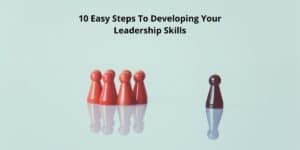Strategic thinking is a powerful skill that can unlock doors to success and wealth in both personal and professional endeavors. It is a mindset that allows individuals to analyze critical factors, anticipate opportunities and threats, and make informed decisions to shape the future. In this comprehensive guide, we will explore the concept of strategic thinking, its importance in various contexts, and practical steps to develop and apply this skill effectively.
Understanding Strategic Thinking
At its core, strategic thinking is a deliberate and intentional thought process that focuses on analyzing crucial variables to influence long-term success. It goes beyond tactical execution and encompasses a broader perspective that considers economic realities, market forces, and available resources. Strategic thinking requires a combination of research, analysis, innovation, problem-solving, communication, and leadership skills.
The Importance of Strategic Thinking
In today’s rapidly changing and competitive landscape, strategic thinking is more critical than ever. It enables individuals and organizations to anticipate, adapt, and capitalize on emerging trends and opportunities. By incorporating strategic thinking into everyday routines, professionals can become more proactive, influential, and valuable contributors. They can demonstrate their readiness to make important decisions and navigate uncertainties with confidence.
Strategic Thinking in Business
In the business context, strategic thinking plays a vital role in the development of organizational goals, plans, and initiatives. During the annual strategic planning process, leaders gather and analyze internal and external data to define the strategic intent and create a roadmap for the future. Regular reviews and evaluations ensure that strategic initiatives are executed effectively and aligned with the overall organizational vision.
Strategic Thinking in Leadership
Leadership and strategic thinking go hand in hand. Effective leaders utilize strategic thinking to make informed decisions about product offerings, competitive landscapes, resource allocation, and team structure. They consider the broader implications of their actions, engage others to achieve objectives, and mitigate unnecessary risks. Strategic thinking empowers leaders to set a clear vision, inspire their teams, and drive meaningful change.
Components of Strategic Thinking
To think strategically, individuals must engage in various components that contribute to a comprehensive analysis and decision-making process. These components include:
1. Analysis of Opportunities and Vulnerabilities
Strategic thinkers carefully evaluate business opportunities and vulnerabilities by considering market dynamics, customer needs, and competitive forces. They identify areas of potential growth and assess the feasibility of different ideas or risks.
2. Cost-Benefit Analysis
Evaluating the costs associated with different strategies and tactics is crucial in strategic thinking. By weighing the potential benefits against the costs, individuals can prioritize initiatives and optimize resource allocation.
3. Scenario Planning and Risk Assessment
Strategic thinkers engage in scenario planning and risk assessment to anticipate potential challenges and develop contingency plans. They consider various scenarios and evaluate the likelihood of success for different strategies.
4. Alignment of Objectives with Overall Plan
Aligning objectives with the overall strategic plan ensures that efforts are coordinated and contribute to the overarching goals. Strategic thinkers identify ways to harmonize individual and team objectives with the broader organizational vision.
5. Consideration of External Factors
Strategic thinking involves analyzing the impact of competitors, suppliers, customers, and emerging substitutes on the strategic plans. By understanding the external environment, individuals can adapt their strategies to capitalize on opportunities and navigate potential threats.
Developing Strategic Thinking Skills
While some may believe that strategic thinking skills are innate, anyone can develop and enhance these skills with practice and dedication. Here are five steps to improve your strategic thinking abilities:
1. Set Aside Time for Reflection and Planning
Make it a habit to set aside dedicated time for reflection, goal-setting, and resource allocation. Use this time to identify trends, prioritize tasks, and determine where to allocate resources effectively.
2. Uncover and Challenge Biases
Strategic thinking requires an objective and unbiased mindset. Identify and challenge your own biases to ensure that your thinking is clear, rational, and inclusive of diverse perspectives.
3. Seek Insights from Experts
Listen to subject matter experts and opinion leaders within your organization to obtain high-quality information. Engage in discussions, ask thought-provoking questions, and gather insights that can inform your strategic thinking process.
4. Ask Good Questions
Develop the skill of asking good questions to uncover better options and plans. Ask questions that challenge assumptions, evaluate credibility, and explore logical coherence. This practice will help you think critically and consider multiple perspectives.
5. Explore Consequences and Embrace Adaptability
Consider the potential consequences of different strategies and decisions. Explore the short-term and long-term implications, and be prepared to adjust and adapt your plans as new information emerges. Embrace a mindset of flexibility and continuous learning.
Books on Strategic Thinking
To further develop your strategic thinking skills, consider studying the following books:
- “Thinking Strategically: The Competitive Edge in Business, Politics, and Everyday Life” by Avinash K. Dixit and Barry J. Nalebuff. This strategy classic provides practical insights into using strategic plans to outmaneuver competitors.
- “Ahead of the Curve” by CMOE. This research-based book offers valuable strategies and tools to develop better strategic thinking skills and lead with confidence.
Teaching Strategic Thinking
If you are looking to enhance strategic thinking skills within your organization, consider attending a quality workshop or training program. These programs provide opportunities to learn and practice strategic thinking exercises, receive feedback from experienced facilitators, and create customized plans for immediate application in your work.
A comprehensive strategic thinking workshop should include:
- Clearly defined learning goals and desired outcomes.
- Pre-reading material on classic and contemporary articles on strategy.
- Opportunities for discussion and clarification of best practices, frameworks, and actionable tools.
- Simulations or learning labs to practice strategic thinking skills.
- Debrief and review sessions to analyze results, learn from mistakes, and identify success factors.
- Individual skills assessment and guidance in creating a customized strategic plan.
Remember, strategic thinking is a skill that develops with practice and experience. Embrace the journey of continuous improvement and apply strategic thinking in your daily work to unlock new opportunities and achieve long-term success.












